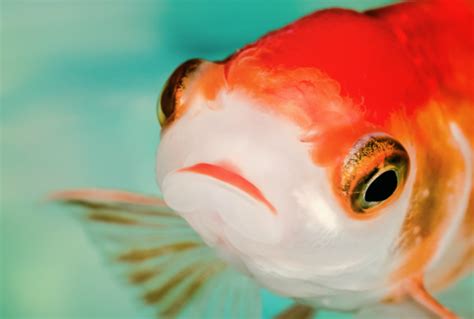Have you ever considered the incredible journey of roach fish as they migrate between different lakes and water courses? It turns out that these red-eyed freshwater migrants possess a remarkable adaptation that sets them apart from their stationary counterparts – sharper eyesight. Yes, you heard it right! According to a groundbreaking study conducted by the esteemed researchers at Lund University in Sweden, roach fish that engage in migration exhibit larger pupils and superior visual acuity compared to those who opt to stay put.
“Animals’ eyes, just like those of humans, are a kind of window to the world. Eyesight controls important behaviour such as searching for food and avoiding predators.”
The intricate connection between migration behavior and ocular enhancements sheds light on the fascinating ways in which evolution shapes the sensory capacities of organisms. Dr. Kaj Hulthén, a prominent biology researcher at Lund University leading this captivating study, shares insights into their investigative approach: “We started by taking photos of the fishes’ eyes and then followed the migration patterns of 2,000 individual roaches over several years and in two different lakes by using implanted electronic transponders.”
Through meticulous observation and analysis, it was revealed that migrating roach fish exhibit distinct features that empower them to thrive in challenging environments. The research team observed that these intrepid travelers with larger pupils have a strategic advantage when foraging for elusive prey such as zooplankton in dimly lit waters. The correlation between pupil size and visual acuity unveils a compelling tale of survival strategies honed through generations of adaptive evolution.
“The fact that migrating individuals have an improved ability to detect visual objects such as zooplankton indicates strong selection for effective food searches.”
By delving into the intricacies of roach fish eyesight through empirical data and theoretical modeling, scientists gained unprecedented insights into how these aquatic creatures perceive their surroundings. This novel approach not only deepens our understanding of migration-induced physiological changes but also underscores the critical role played by enhanced sensory capabilities in sustaining energy-intensive migratory journeys.
As we marvel at the wonders of nature’s design revealed through the lens of scientific inquiry, Dr. Hulthén emphasizes the broader implications of this research: “The new results help us understand how migration behavior is shaped by ecological and physiological factors.” Indeed, this knowledge holds significant promise for informing conservation efforts and fisheries management practices amidst evolving environmental landscapes.
“By understanding why some individuals migrate and others don’t, we can gain a deeper insight into how fish populations respond to environmental changes.”
In essence, each shimmering scale on a roach fish tells a tale of resilience forged through adaptation and honed by relentless pursuit; their migration saga unfolds against a backdrop of interconnected ecosystems where every ripple reverberates across the waterscape. As we peer into the depths where science meets storytelling, we glimpse not just fishes swimming against currents but beings sculpted by nature’s timeless artistry.
So next time you catch sight of a school of roach fish navigating their watery highways with purposeful grace, remember – behind those gleaming red eyes lies a world teeming with secrets waiting to be unveiled. And perhaps, in their journey towards unknown horizons, we may find reflections of our own quest for discovery amidst life’s ever-shifting tides.

